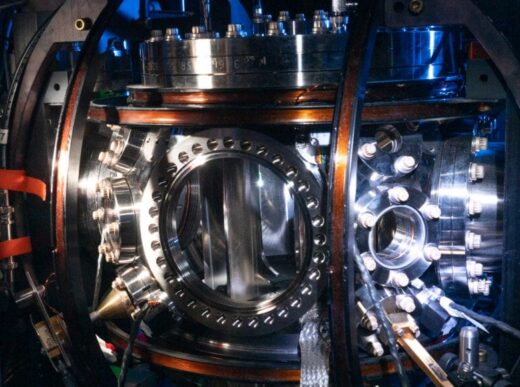New research suggests that human ancestors faced near-extinction around 900,000 years ago due to extreme cold and drought, with their population plummeting to precarious levels. They just barely survived this challenging period, and this genetic bottleneck may have paved the way for Homo sapiens, Neanderthals, and Denisovans.
A Precarious Past
In a groundbreaking study, scientists have proposed a fascinating chapter in the history of human evolution. It appears that our ancestors faced a harrowing brush with extinction between approximately 930,000 and 813,000 years ago, a critical population bottleneck that could have dramatically shaped the course of human history. This sobering revelation coincides with a period of extreme cold and prolonged drought in Africa and Eurasia, as evidenced by geological records.
If this new interpretation of DNA analysis stands up to scrutiny, it suggests that a relatively small number of survivors from the Stone Age, enduring the harshest of conditions, may have evolved into a common ancestor for Homo sapiens, Neanderthals, and Denisovans. Previous genetic studies based on ancient fossils suggest that this shared ancestral species emerged somewhere between 700,000 and 500,000 years ago.
This extraordinary tale involves Homo species braving a brutal 117,000-year-long deep freeze, their numbers dwindling to a precarious 1,280 individuals capable of reproduction. These hardy predecessors managed to reproduce just enough to avoid complete extinction.
Before the onset of this severe climatic shift, the ancestral population’s potential breeding pool numbered between 58,600 and 135,000 individuals, as estimated by the research team.
Unveiling the Ancient Past Through DNA
To unravel this ancient narrative, Wangjie Hu and colleagues from the Icahn School of Medicine at Mount Sinai in New York City employed a novel statistical method. This method was designed to estimate the timing and sizes of ancient breeding populations by examining patterns of shared gene variants present in modern human populations. The study’s genetic data were derived from 3,154 individuals across ten African populations and 40 European and Asian populations, sourced from scientific databases dedicated to human DNA research.
The research team calculated the expected diversity of these contemporary gene variants based on hypothetical historical population dynamics, including periods marked by significant declines in the number of breeding adults. Among these scenarios, a population crash among human ancestors from around 930,000 to 813,000 years ago best matched the genetic variation patterns found in the analyzed data.
Intriguingly, the evidence of an ancient population crash was more pronounced among African populations compared to non-African groups. Consequently, it is speculated that a reduced population of human ancestors could have inhabited Africa from around 900,000 years ago, although the possibility of Eurasia serving as a refuge for survivors is not ruled out.
Rebound and Evolution
As the beleaguered population began its slow recovery, it may have eventually evolved into Homo heidelbergensis, according to the researchers. This theory posits that H. heidelbergensis could be a common ancestor for Denisovans, Neanderthals, and H. sapiens. However, it’s worth noting that some scientists contest this idea, arguing that the fossils attributed to H. heidelbergensis display too many skeletal disparities to be categorized as a single Homo species.
In a commentary accompanying the study, archaeologist Nick Ashton and paleoanthropologist Chris Stringer cautiously endorse the concept of an ancient population crash among human ancestors. They also propose that various Homo groups occupied different regions of Africa, Asia, and Europe between 900,000 and 800,000 years ago, during the speculated population bottleneck. These groups may have been unrelated to later Homo sapiens and may have somehow weathered the severe global cooling more effectively than groups that gave rise to modern humans.
To obtain more precise insights into the timing and locations of ancient population crashes, it is hoped that the study of DNA from ancient Homo sapiens, Neanderthals, and Denisovans will provide valuable clarifications.
Controversy and Unresolved Questions
Despite the intrigue surrounding this research, some experts remain skeptical. Population geneticist Stephan Schiffels from the Max Planck Institute for Evolutionary Anthropology in Leipzig, Germany, has raised doubts about the study’s conclusions. He argues that the complex interconnections among ancient Homo groups and the statistical uncertainties in determining their genetic relationships obscure the molecular signals of population collapses that occurred nearly one million years ago. Schiffels contends that the suggested precision in dating such ancient events is unattainable.
Moreover, Schiffels points out that previous research on modern human DNA has not identified indications of such an ancient and dramatic population decline, despite extensive studies and modeling over the years.
While the study opens a captivating window into our ancient past and the challenges our ancestors faced, it also underscores the complexities of unraveling history from genetic data. Further research and the study of ancient DNA may eventually provide conclusive answers to these intriguing questions about our ancestors’ close call with extinction.















